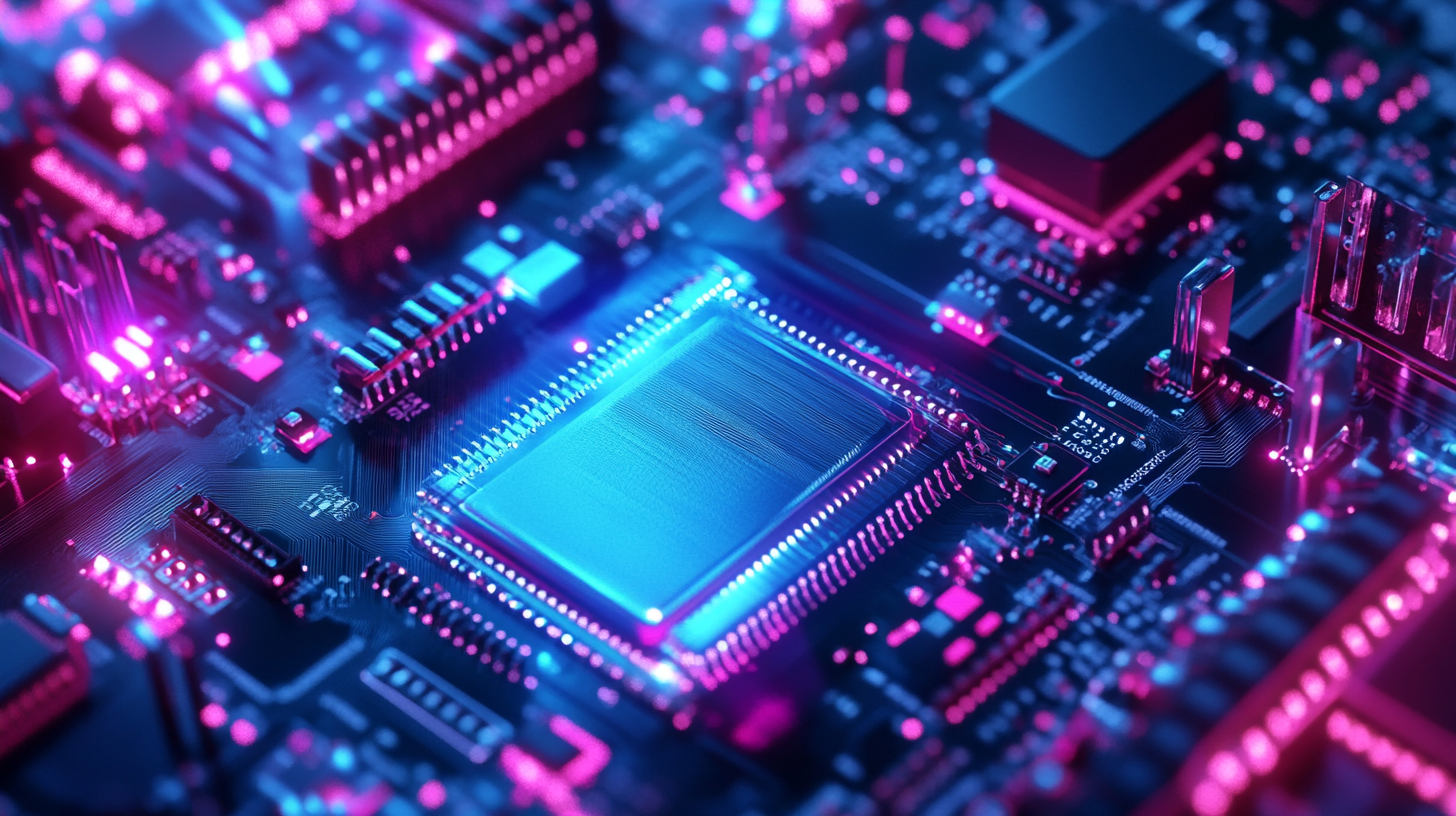In recent years, the global economic landscape has been significantly impacted by the ongoing trade tensions between the United States and China, particularly concerning tariff policies that have tested the resilience of various industries. Despite these challenges, China's manufacturing sector has demonstrated remarkable growth, driven by innovations in technologies such as the Li Ion Polymer Battery. According to a report by ResearchAndMarkets, the global Li Ion Polymer Battery market is projected to reach USD 9.2 billion by 2026, reflecting a compound annual growth rate (CAGR) of 8.5% from 2021 to 2026. This growth highlights not only the importance of advanced battery technologies in powering electric vehicles and consumer electronics but also underscores how Chinese manufacturers are leveraging these innovations to maintain their competitive edge against the backdrop of tariff parity. As the demand for more efficient and sustainable energy solutions mounts, China's ability to harness cutting-edge Li Ion Polymer Battery innovations positions it strongly in the global market, suggesting that even amidst economic uncertainties, substantial growth opportunities remain.

Amidst the ongoing US-China tariff parity, China's manufacturing sector has demonstrated remarkable resilience, particularly in the realm of lithium-ion polymer batteries. According to a recent report by the International Energy Agency (IEA), the demand for electric vehicle (EV) batteries is projected to triple by 2030, driving significant innovations in battery technology. In this context, China's focus on efficient manufacturing methods has allowed it to maintain a competitive edge, despite the challenging trade landscape.
As tariffs stabilize, manufacturers are finding new ways to optimize their supply chains and enhance productivity. The latest market data from BloombergNEF indicates that China's share of the global battery manufacturing market is expected to exceed 70% by 2025, thanks in part to advancements in battery materials and production processes. Companies that adapt quickly to changing trade dynamics and invest in R&D are positioning themselves for long-term growth.
**Tips:** Embrace technological advancements in manufacturing to counteract the impacts of tariffs. Investing in automation and smart manufacturing technologies can significantly boost efficiency. Additionally, consider diversifying supply sources to mitigate risks associated with international trade tensions. By fostering innovation and flexibility, manufacturers can turn challenges into opportunities for growth.

In the rapidly evolving landscape of manufacturing, China's advancements in lithium-ion polymer battery technology are providing a significant competitive edge. Innovations in this field have led to the development of batteries that are not only lighter and more efficient but also boast faster charging times and longer lifespans. These enhancements are essential for various applications, including electric vehicles, consumer electronics, and renewable energy storage systems. As the global demand for sustainable energy solutions rises, China’s robust manufacturing capabilities allow it to stay at the forefront of battery production.
Moreover, the strategic push for research and development in lithium-ion polymer batteries reflects China’s commitment to maintaining its position in the global market. Companies are increasingly investing in next-generation technologies such as solid-state batteries and advanced recycling methods to enhance sustainability. This focus on innovation not only helps in mitigating tariff impacts from trade tensions with the U.S. but also positions Chinese manufacturers to fulfill the increasing international demand for high-performance battery solutions. By harnessing these cutting-edge technologies, China's manufacturing sector is not just surviving the challenges posed by tariffs but thriving through strategic innovation and operational efficiency.
In the face of challenging tariff environments, Chinese manufacturers have displayed remarkable adaptability, particularly within the sector of lithium-ion polymer batteries. By leveraging technological advancements and optimizing production processes, these companies have successfully mitigated the impact of US-China trade tensions. This strategic agility allows them to maintain competitive pricing while enhancing the quality of their products, ensuring they remain appealing to both domestic and international markets.
Furthermore, innovation has become a cornerstone of Chinese manufacturers' strategies. Investments in research and development have led to breakthroughs in battery efficiency and sustainability, setting new industry standards. As competition intensifies, manufacturers are not only focusing on cutting costs but also on creating more advanced and eco-friendly solutions. This proactive approach not only addresses the immediate challenges posed by tariffs but also positions Chinese firms as leaders in the global battery market, capable of meeting the rising demand for energy storage solutions in various applications.

China's manufacturing sector continues to demonstrate remarkable resilience, driven by technological advancements and innovative products like lithium-ion polymer batteries. According to a report by the China Association of Automobile Manufacturers, the production of electric vehicles (EVs) surged by 200% in the past year, indicating a robust demand for cutting-edge battery technologies. As the global market shifts toward sustainable energy solutions, Chinese manufacturers are well-positioned to cater to this growing demand, further highlighting their pivotal role in the international landscape.
Looking ahead, the sustainability of growth in China's manufacturing landscape pivots on continued innovation and adaptation. A study by McKinsey & Company forecasts that investments in advanced manufacturing technologies could potentially increase productivity by 30% by 2025. The focus on research and development, particularly in battery technologies, will enhance the competitive advantage of Chinese manufacturers, enabling them to overcome challenges posed by international tariffs and shifting market dynamics. This proactive approach not only ensures steady growth but also sets the stage for long-term leadership in the global manufacturing arena.
In the face of trade tensions and tariffs, China's manufacturing sector has exhibited remarkable resilience, primarily fueled by significant advancements in technology. The lithium-ion battery market, a cornerstone of modern manufacturing, has seen substantial innovation that not only enhances performance but also reduces costs. According to the report by BloombergNEF, the cost of lithium-ion batteries has plummeted by over 89% since 2010, dropping to around $137 per kilowatt-hour in 2020, which is driving down the overall production costs for various industries, particularly in electric vehicles and consumer electronics.
Moreover, China's commitment to investing in research and development has positioned it as a leader in battery technology. The China Battery Industry Report indicates that by 2025, the country is projected to dominate 70% of the global battery production capacity. This surge in technological development allows manufacturers to leverage more efficient processes, thereby increasing output and maintaining competitive advantage despite external pressures. Such advancements not only support economic resilience but also signal a transformative shift in how China approaches its manufacturing strategies in a rapidly changing global landscape.
| Year | Manufacturing Growth Rate (%) | Li-Ion Polymer Battery Production (TWh) | R&D Investment (Billion USD) | Number of Patents Filed |
|---|---|---|---|---|
| 2019 | 6.1 | 0.12 | 10.5 | 1500 |
| 2020 | 2.3 | 0.15 | 8.0 | 1200 |
| 2021 | 8.2 | 0.20 | 12.0 | 1800 |
| 2022 | 9.0 | 0.25 | 15.0 | 2000 |
| 2023 | 10.5 | 0.30 | 18.0 | 2500 |


